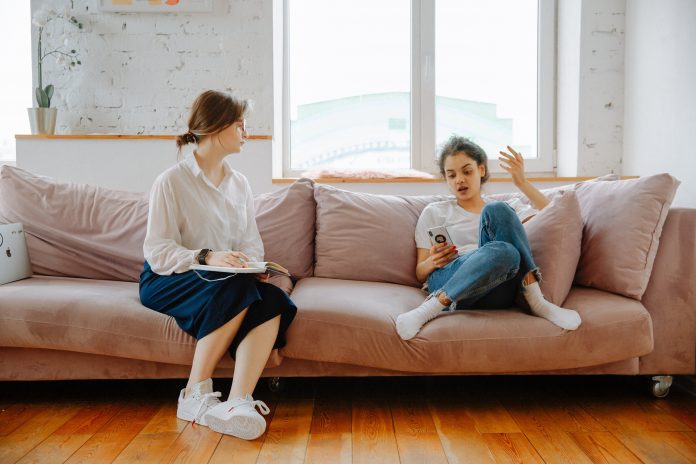Understanding Your Child’s Emotional Response to Parental Affection
The Complexity of Children’s Emotions
As a seasoned content marketer and a coach with extensive experience in parenting and child-parent relationships, I’ve encountered numerous instances where parents are baffled by their children’s adverse reactions to their displays of affection. It’s a common scenario in many households: a parent gives a loving hug or kiss to their partner, and suddenly, their child seems upset, agitated, or even angry. This reaction can be perplexing and concerning, but it’s essential to delve into the underlying reasons behind such behavior.
The Role of Developmental Stages
Children’s emotional and psychological development plays a crucial role in how they perceive and react to their environment. During different stages of their growth, they exhibit varied responses to the same situations. For instance, toddlers and preschoolers are at a stage where they are developing a sense of independence while also feeling a strong attachment to their parents. This dichotomy can sometimes manifest as jealousy or discomfort when they see their parents showing affection to each other instead of them.
Emotional Security and Attachment
A child’s sense of emotional security is closely tied to their reactions. Children who feel secure and confident in their parent’s love might view parental affection towards each other as reassuring. However, those who are struggling with attachment issues or insecurity might perceive this as a threat to their own relationship with their parents. It’s a complex emotional landscape where children are trying to understand and navigate their place in the family dynamics.
The Impact of Family Dynamics
Family dynamics significantly influence a child’s reaction to parental affection. In a household where open displays of affection are rare, a child might react with surprise or confusion when witnessing such moments. Conversely, in families where affection is frequently displayed, children might be more accustomed to it and react differently.
Observational Learning and Mimicry
Children are keen observers and often mimic the behavior they see around them. If they observe positive and affectionate interactions between their parents, they might learn to associate such behavior with love and security. However, if the family dynamics involve conflict or a lack of affection, children might not understand or appreciate affectionate gestures when they do occur.
The Link to Behavioral Patterns
Children’s reactions to parental affection can also be linked to their own behavioral patterns. For instance, a child who is used to being the center of attention might feel sidelined or ignored when their parents show affection to each other. This can lead to displays of disruptive behavior as a means of regaining attention.
Understanding Through Personal Experience
In my years of coaching, I’ve observed that children often express their insecurities and needs through their behavior. A child upset by parental affection might be seeking reassurance about their place in the family or might be struggling with feelings of jealousy or exclusion. It’s crucial for parents to recognize these signals and address them with empathy and understanding.
Strategies for Managing Your Child’s Reaction to Parental Affection
Navigating Emotional Turbulence with Empathy
Addressing Jealousy and Insecurity
When a child reacts negatively to their parents showing affection to each other, it’s often a manifestation of deeper emotions like jealousy or insecurity. As a parent and a coach, I’ve learned that the key to managing these reactions lies in empathy and open communication. It’s crucial to acknowledge your child’s feelings and reassure them of their importance in the family.
Open Dialogue: Create a safe space for your child to express their feelings. Ask them why they feel upset when you show affection to your partner. This conversation can reveal underlying issues that need addressing.

Reassurance: Regularly reassure your child of your love. Make it clear that your affection for your partner does not diminish the love you have for them.
Inclusive Family Time: Plan activities that involve all family members, ensuring that your child feels included and valued.
Balancing Attention
Children often crave attention and might feel left out when they see their parents being affectionate with each other. Balancing your attention can help mitigate these feelings.
Quality Time: Spend quality one-on-one time with your child. This doesn’t have to be elaborate; even a few minutes of undivided attention daily can make a significant difference.
Affectionate Gestures: Show affection to your child regularly. Hugs, kisses, or even a pat on the back can reinforce your love for them.
Setting Healthy Boundaries
Teaching Respect for Personal Relationships

It’s important for children to understand and respect the personal relationship between their parents. This understanding lays the foundation for healthy relationship dynamics in their future.
Modeling Healthy Relationships: Demonstrate a healthy, respectful relationship with your partner. This teaches your child about the importance and normalcy of romantic affection.
Age-appropriate Explanations: Explain to your child why it’s normal and healthy for parents to show affection to each other. Tailor this explanation to their age and level of understanding.
Encouraging Emotional Independence

Fostering Self-Confidence and Security
A child’s reaction to parental affection can sometimes stem from a lack of emotional independence. Encouraging self-confidence and security is vital.
Encourage Independence: Engage your child in activities that boost their confidence and independence. This could be as simple as allowing them to make small decisions or encouraging them to play independently.
Positive Reinforcement: Praise your child for their achievements and independent efforts. This reinforces their sense of self-worth and security.
The Psychological Perspective: Why Children React to Parental Affection
Understanding the Child’s Mindset

Developmental Psychology Insights
From a psychological standpoint, children’s reactions to seeing their parents show affection can be deeply rooted in their developmental stage. As a parent and relationship coach, I’ve seen firsthand how understanding these stages can provide invaluable insights.
Erikson’s Stages of Development: According to Erik Erikson’s theory, children go through various stages of psychosocial development. For instance, toddlers in the autonomy vs. shame and doubt stage might see parental affection as a threat to their growing independence.
Attachment Theory: John Bowlby’s attachment theory suggests that children develop a sense of security based on their early relationships. If a child feels secure, they are more likely to view parental affection positively.
Emotional Intelligence and Empathy
Developing emotional intelligence in children is crucial. It helps them understand and manage their emotions, as well as empathize with others.
Teaching Emotional Vocabulary: Help your child articulate their feelings by teaching them the language of emotions. This empowers them to express themselves more clearly.
Role-Playing Scenarios: Use role-playing to help your child understand different perspectives, including why parents show affection to each other.
The Role of Family Environment
Impact of Parenting Styles
The way parents interact with their children and each other significantly impacts a child’s reaction to affection.
Authoritative vs. Authoritarian Parenting: Authoritative parenting, which is nurturing yet sets clear boundaries, can foster a more accepting attitude towards parental affection compared to authoritarian parenting.
Consistency and Predictability: A consistent and predictable family environment helps children feel secure, reducing negative reactions to parental affection.
Addressing Behavioral and Emotional Challenges
Recognizing Underlying Issues

Sometimes, a child’s adverse reaction to parental affection can indicate deeper behavioral or emotional challenges.
Seeking Professional Help: If a child consistently shows extreme reactions, it might be beneficial to consult a child psychologist or therapist.
Behavioral Disorders: Be aware of signs of behavioral disorders, such as Oppositional Defiant Disorder (ODD), which can manifest as negative reactions to parental affection.
Real-Life Scenarios and Case Studies: Navigating Parental Affection
Case Study 1: The Jealous Toddler
Scenario Overview

In a family I coached, a three-year-old boy would often throw tantrums whenever he saw his parents hugging or kissing. This behavior puzzled and concerned his parents.
Analysis and Approach
Understanding the Child’s Perspective: At this age, children are developing their sense of self and can feel threatened by not being the center of attention. The child’s reaction was a plea for reassurance.
Parental Strategy: The parents began including their child in group hugs, showing him that he was an integral part of the family affection. They also ensured to spend individual time with him, reinforcing their love and attention.
Case Study 2: The Sensitive Preteen
Scenario Overview
A preteen girl seemed withdrawn and upset whenever her parents showed affection towards each other. This change in behavior was a new development for the family.
Analysis and Approach
Exploring Underlying Causes: Upon discussion, it was revealed that the girl felt her parents were ‘different’ from each other and feared they were neglecting her.
Parental Strategy: The parents used open communication to discuss her feelings, reassuring her of her place in the family. They also involved her in family activities that promoted bonding and understanding.
Case Study 3: The Misunderstood Teenager
Scenario Overview
A teenage boy started acting out and showing disrespect whenever his parents were affectionate with each other. This behavior was out of character for him.
Analysis and Approach
Addressing the Teen’s Needs: Teenagers often struggle with emotional and social challenges. In this case, the teen felt embarrassed and disconnected from his parents.
Parental Strategy: The parents engaged in conversations about relationships and emotions, helping their son understand the normalcy of affection. They also respected his need for independence while ensuring he felt included and loved.
Incorporating External Resources
Linking to Related Issues
In dealing with children’s reactions to parental affection, it’s beneficial to understand related behavioral aspects. For instance, understanding why a toddler throws toys instead of playing can offer insights into their emotional state. Similarly, exploring why a child makes up stories for attention can reveal a need for reassurance, which might be influencing their reaction to parental affection.
Conclusion
These real-life scenarios and case studies highlight the importance of understanding, empathy, and tailored approaches in addressing children’s reactions to parental affection.
Every child is unique, and their reactions are influenced by a myriad of factors. By being attentive and responsive to their needs, parents can foster a loving and secure family environment.
We’ve delved into the psychological aspects, practical strategies, and real-life case studies, providing a well-rounded understanding of this complex issue. If you have any more questions or need further insights, feel free to ask!


